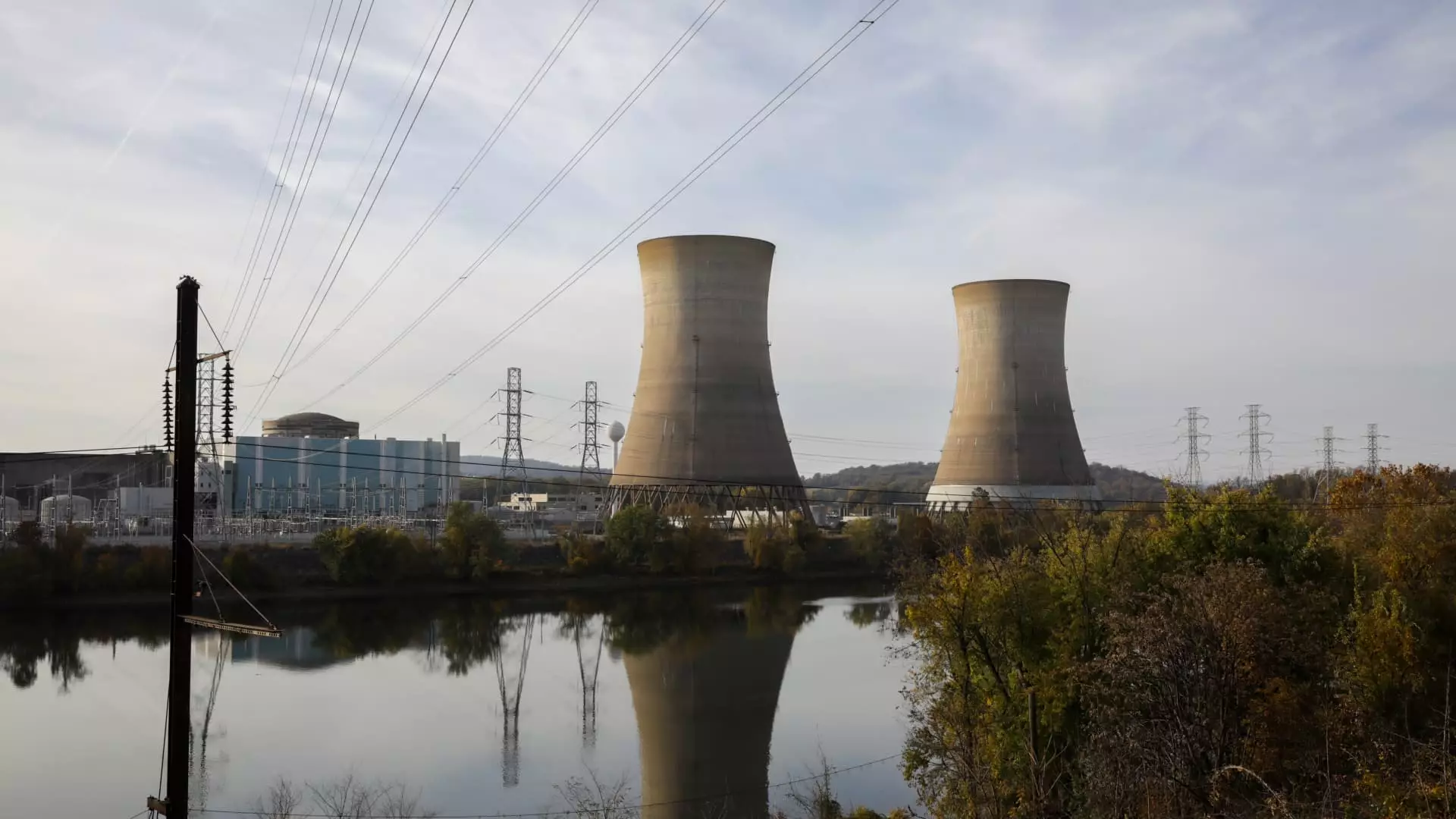The landscape of artificial intelligence (AI) is evolving rapidly, ushering in both opportunities and challenges across various sectors, with energy companies being significantly impacted. The recent unveiling of China’s DeepSeek open-source AI laboratory sent shockwaves through the market, prompting investors to reassess how this technology will influence energy consumption, particularly concerning data centers that power AI applications. As a result, stocks of power companies closely tied to the technology sector have experienced a noticeable decline—a trend that deserves further exploration.
At the start of the week, shares of major power companies, including Constellation Energy and Vistra, plunged—each by over 16%—while GE Vernova and Talen Energy weren’t spared either, witnessing declines of about 18% and 15%, respectively. The sharp falls are indicative of investors recalibrating their expectations amid newfound competition in the AI space, specifically from advancements emerging from China. Before this revelation, Constellation, Vistra, and GE Vernova had been notable performers within the S&P 500 as market participants anticipated a surge in energy demand from AI data centers. However, the equities succumbed to a wave of apprehension as the market digested the implications of DeepSeek’s advancements.
DeepSeek’s developments came as a surprise to many, especially its release of an AI model on Christmas Day, which Scale AI CEO Alexandr Wang referred to as “earth shattering.” This model, now in direct competition with established names such as OpenAI, aims to deliver performance that rivals or even surpasses its American counterparts. The subsequent debut of DeepSeek-R1 has led to comparisons not only in functionality but also in efficiency with leading AI technologies, thus raising questions regarding the sustainability of U.S. positioning in the AI arena.
Bank of America analysts shared concerns that these developments might challenge the assumptions surrounding U.S. leadership in AI, especially when looking at infrastructure needs related to cloud computing, chip production, and, crucially, energy demands. It appears that as AI capabilities expand, so too will the underlying requirements for power generation, reinvigorating discussions about energy sources and their viability.
Nuclear Power: The Go-To Solution for Data Centers
In anticipation of increased energy demands, many tech firms are now considering nuclear power as a pivotal component of their energy strategy. Constellation Energy’s agreement with Microsoft to reactivate the Three Mile Island nuclear plant signifies a forward-thinking approach to address this potential influx in energy consumption. Talen Energy has taken similar strides by supplying Amazon’s data centers with power sourced from the Susquehanna nuclear facility.
While Vistra has yet to finalize agreements connecting its resources to specific data centers, the company’s existing nuclear and natural gas assets position it as a contender in the energy landscape. GE Vernova’s recent stock surge indicates market optimism regarding its capabilities in supplying the reliable energy needed to support burgeoning AI demand.
Despite optimism surrounding specific companies, analysts at Bank of America pointed out a crucial bottleneck in the equation: the infrastructure itself. In both Europe and the United States, the electrical grids are buckling under the pressure of meeting load growth requirements; they remain under-capitalized and ill-prepared for the surge anticipated from expanding AI operations. For the power sector to sustainably scale in response to AI demands, significant investment in energy infrastructure is paramount.
This analysis reveals a convoluted picture for investors, one where the promise of AI’s energy consumption contrasts starkly with the existing limitations of energy infrastructure. As companies pivot to meet rising demands, understanding both the technological advancements and the necessary support systems will be key to navigating this rapidly changing landscape.
The interplay between AI and the energy sector underscores a complex reality: the excitement around AI’s potential must be tempered with a clear-eyed view of energy needs and the infrastructure required to support them. Investors, analysts, and companies must remain vigilant, ready to adapt to the seismic shifts unfolding before them.

